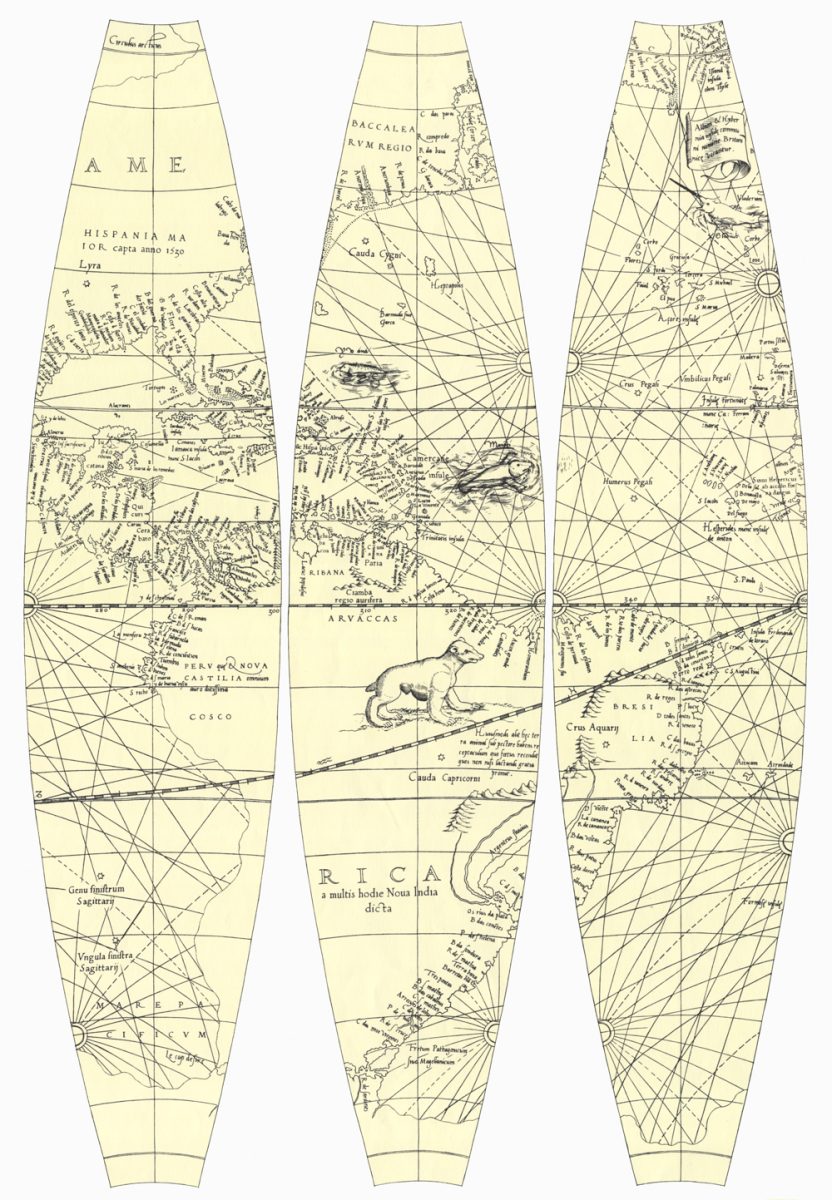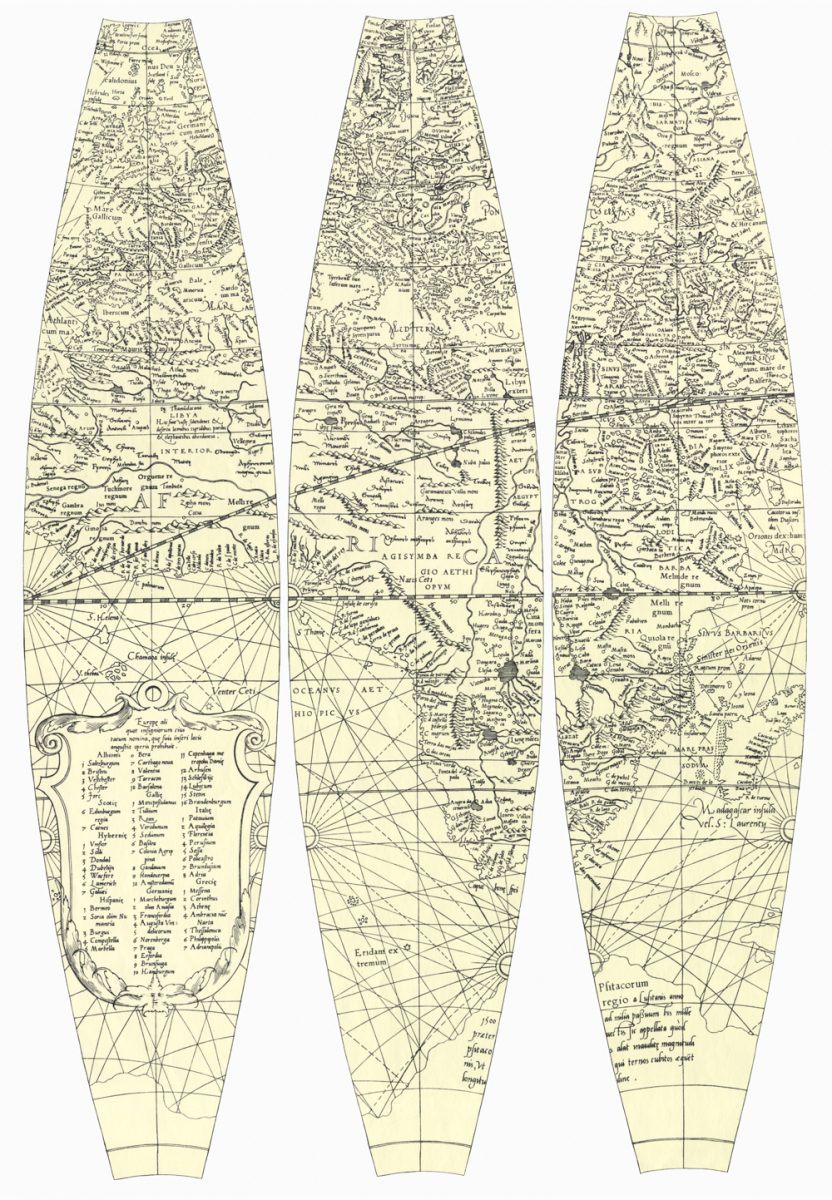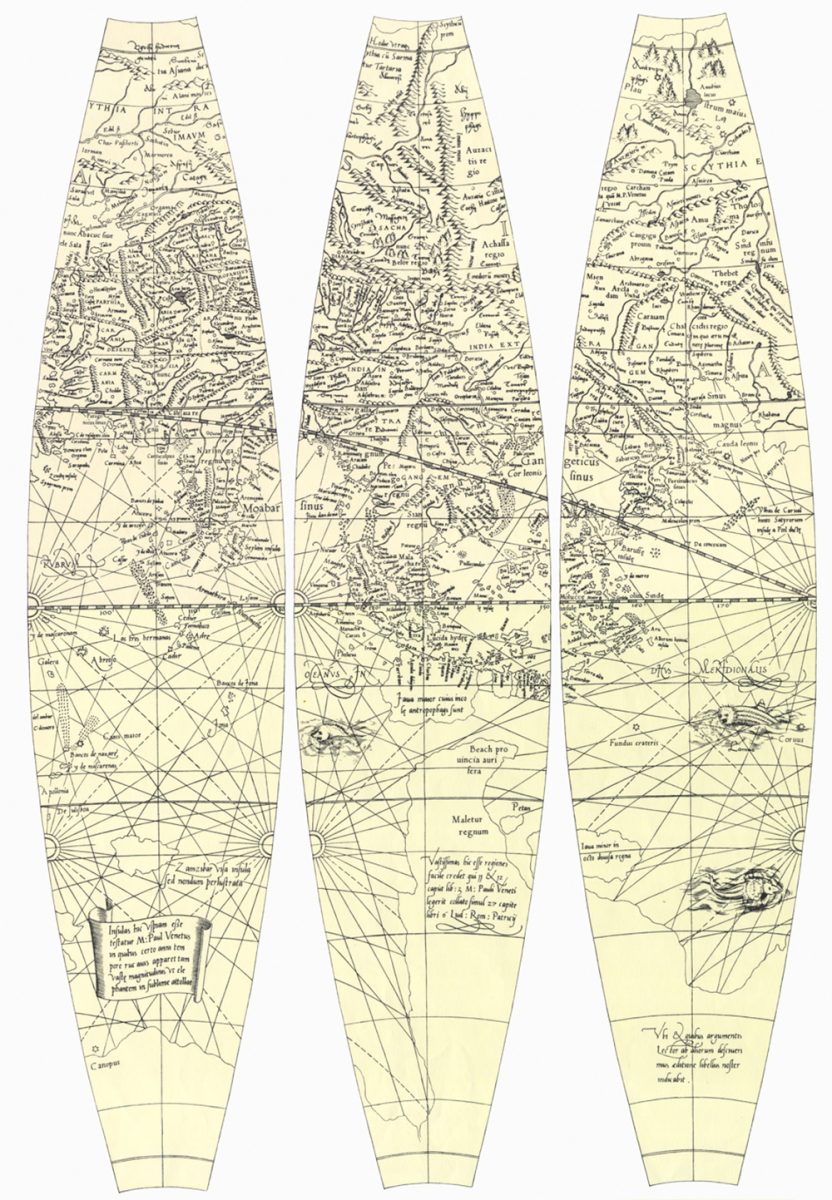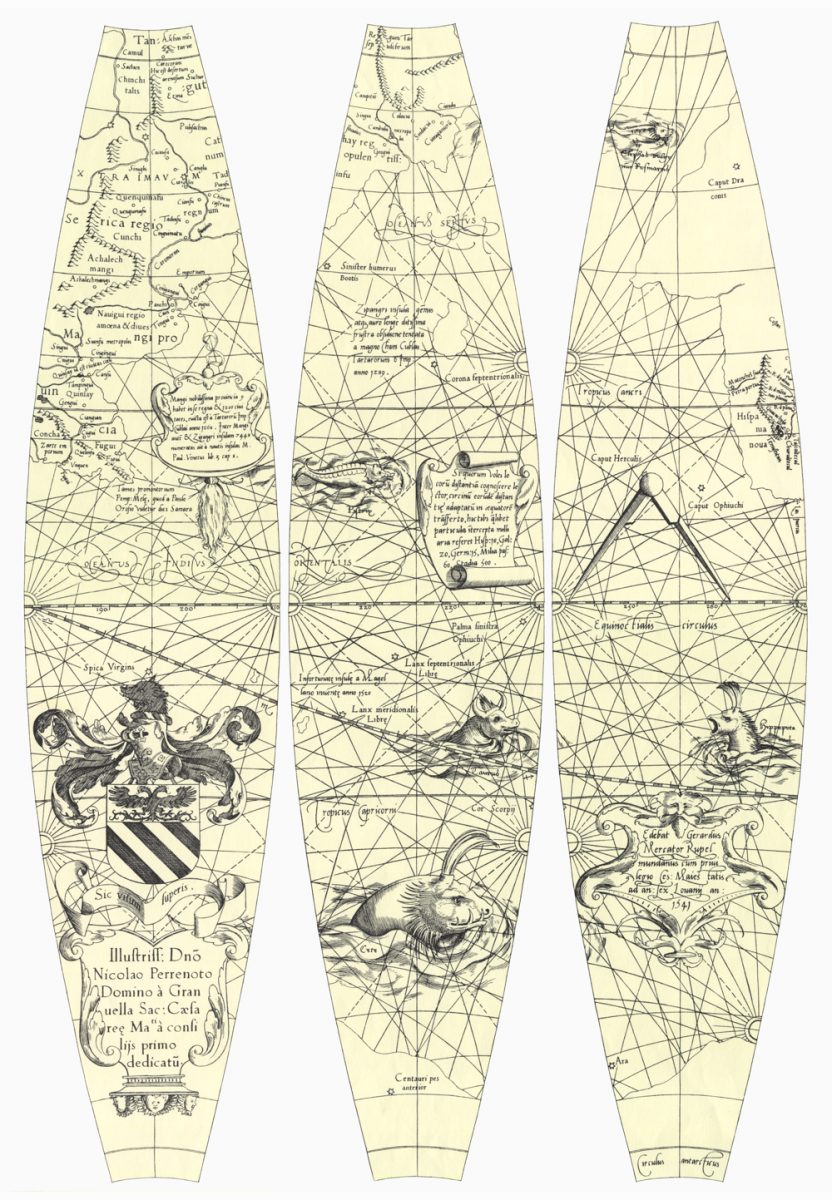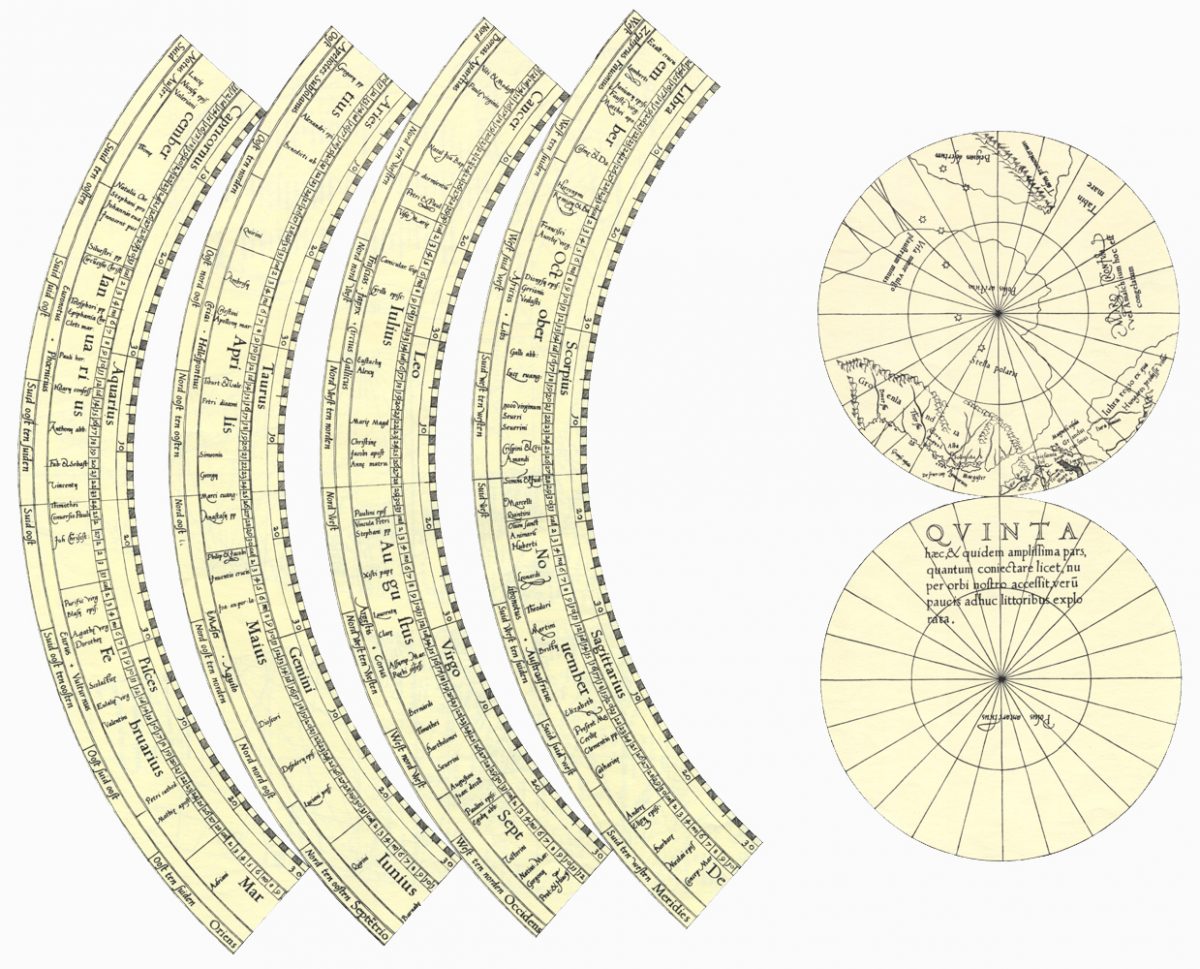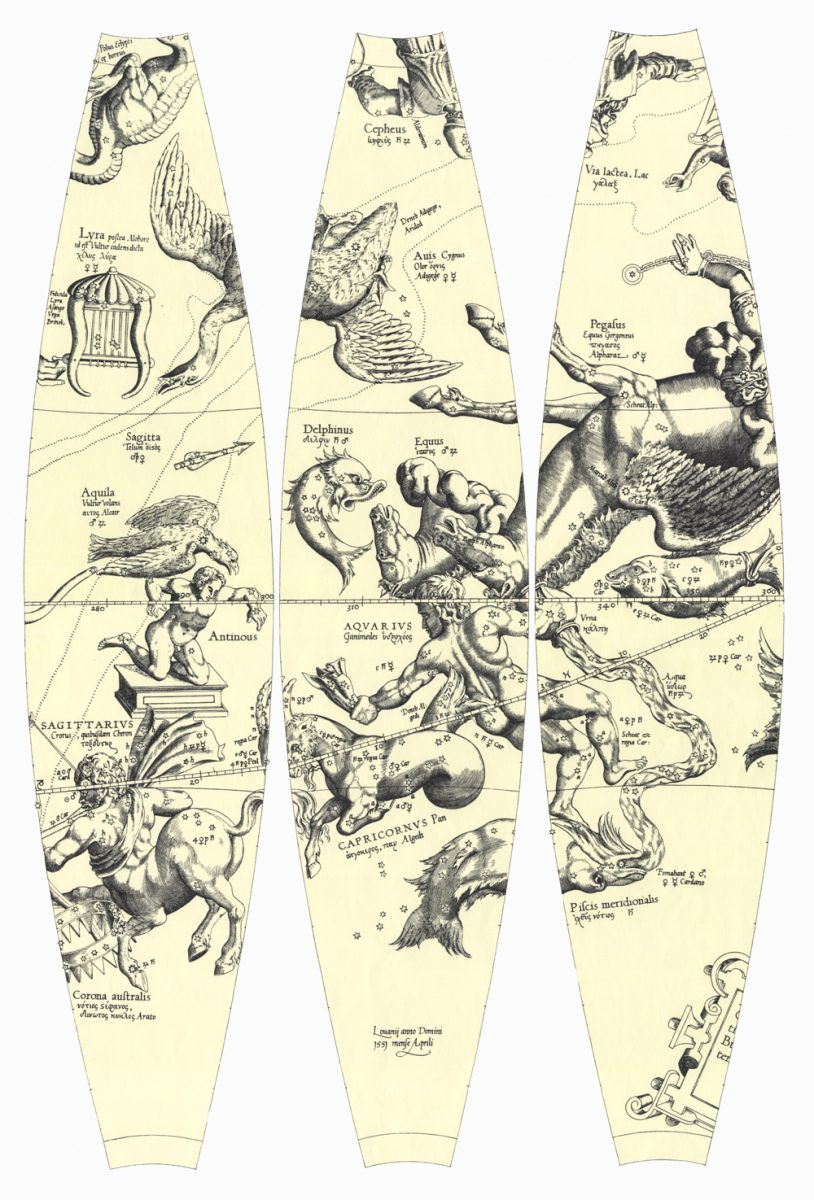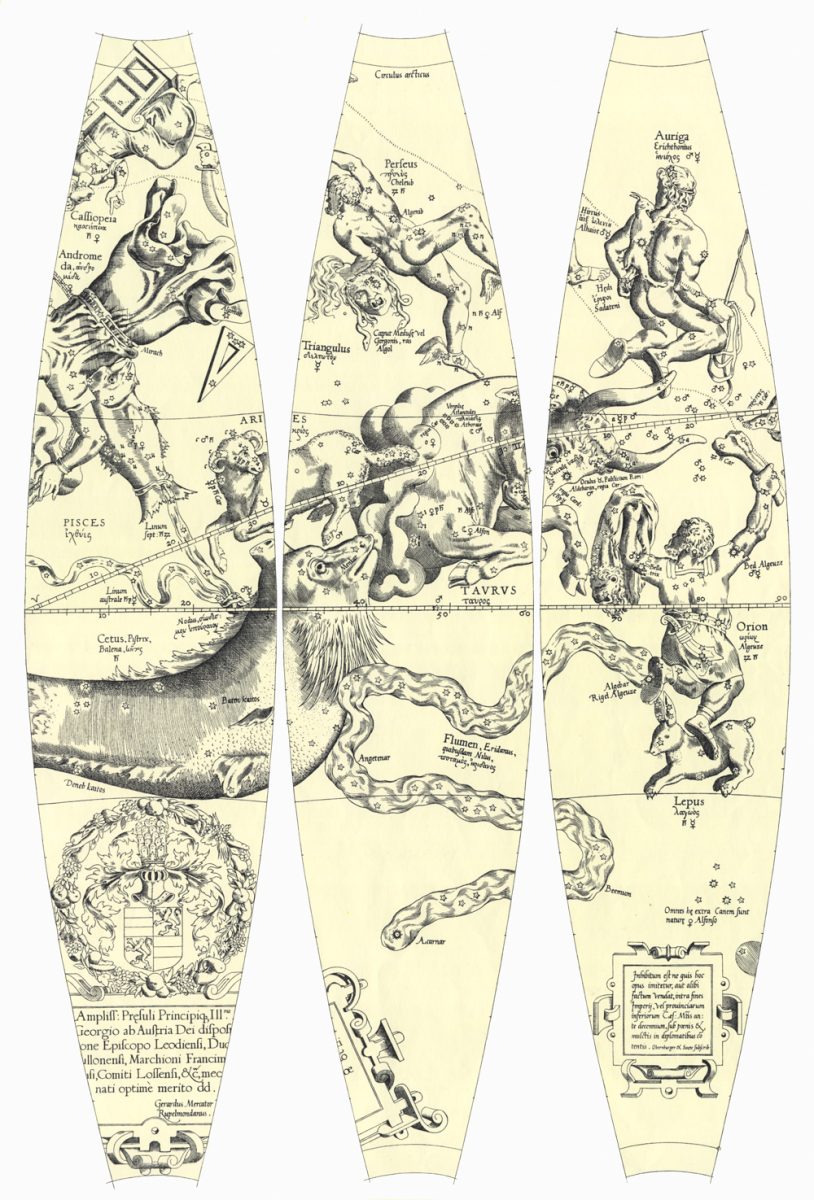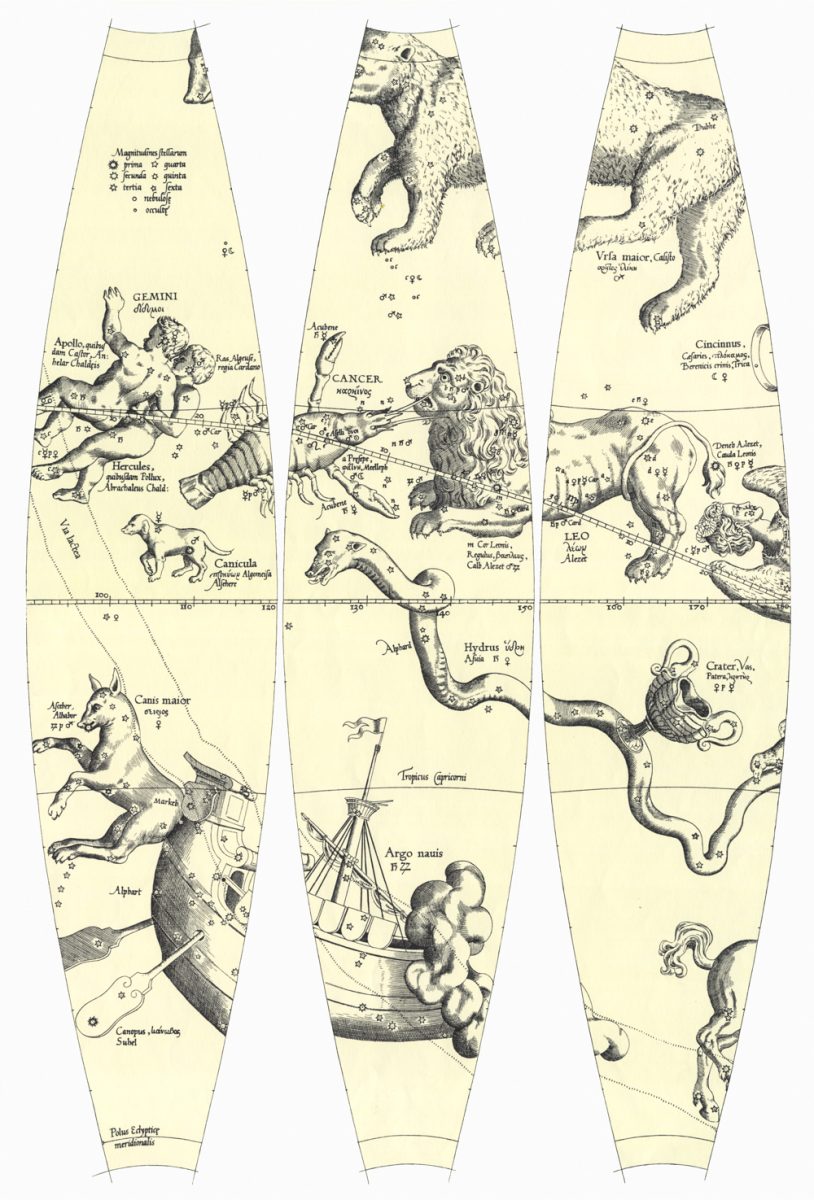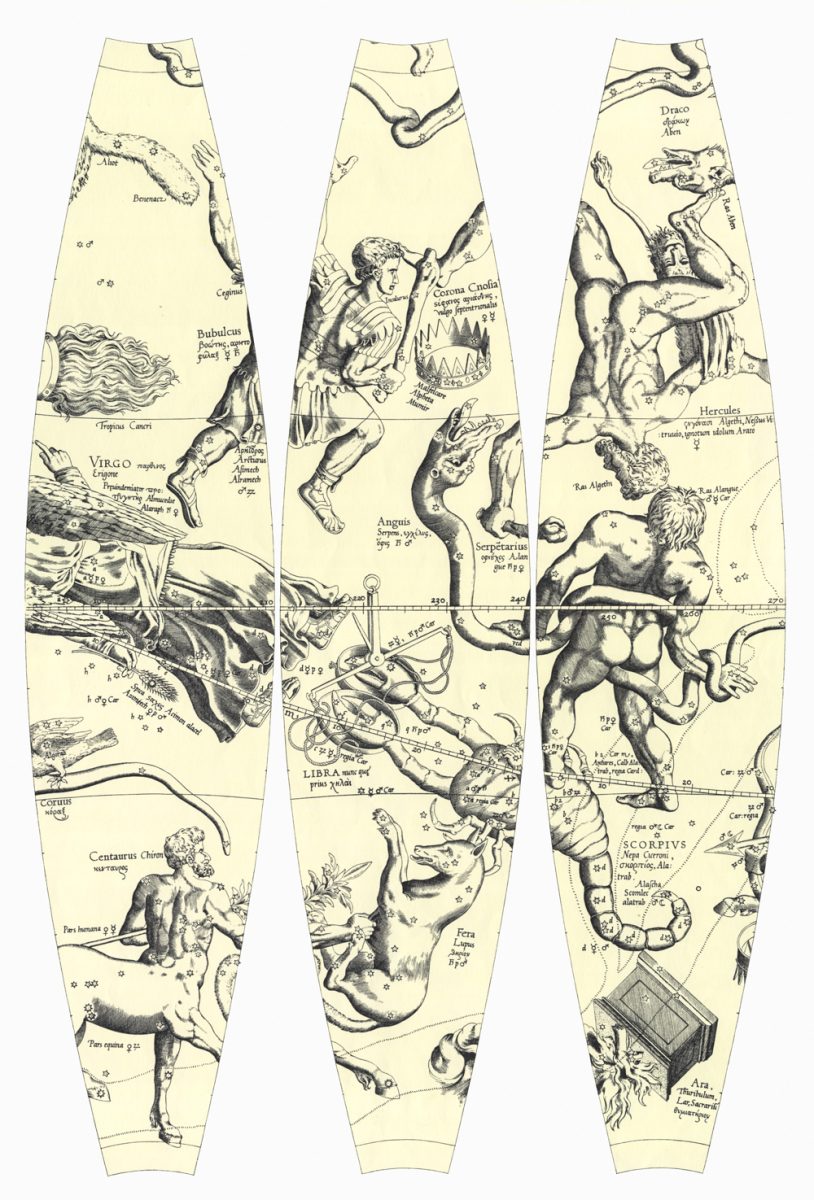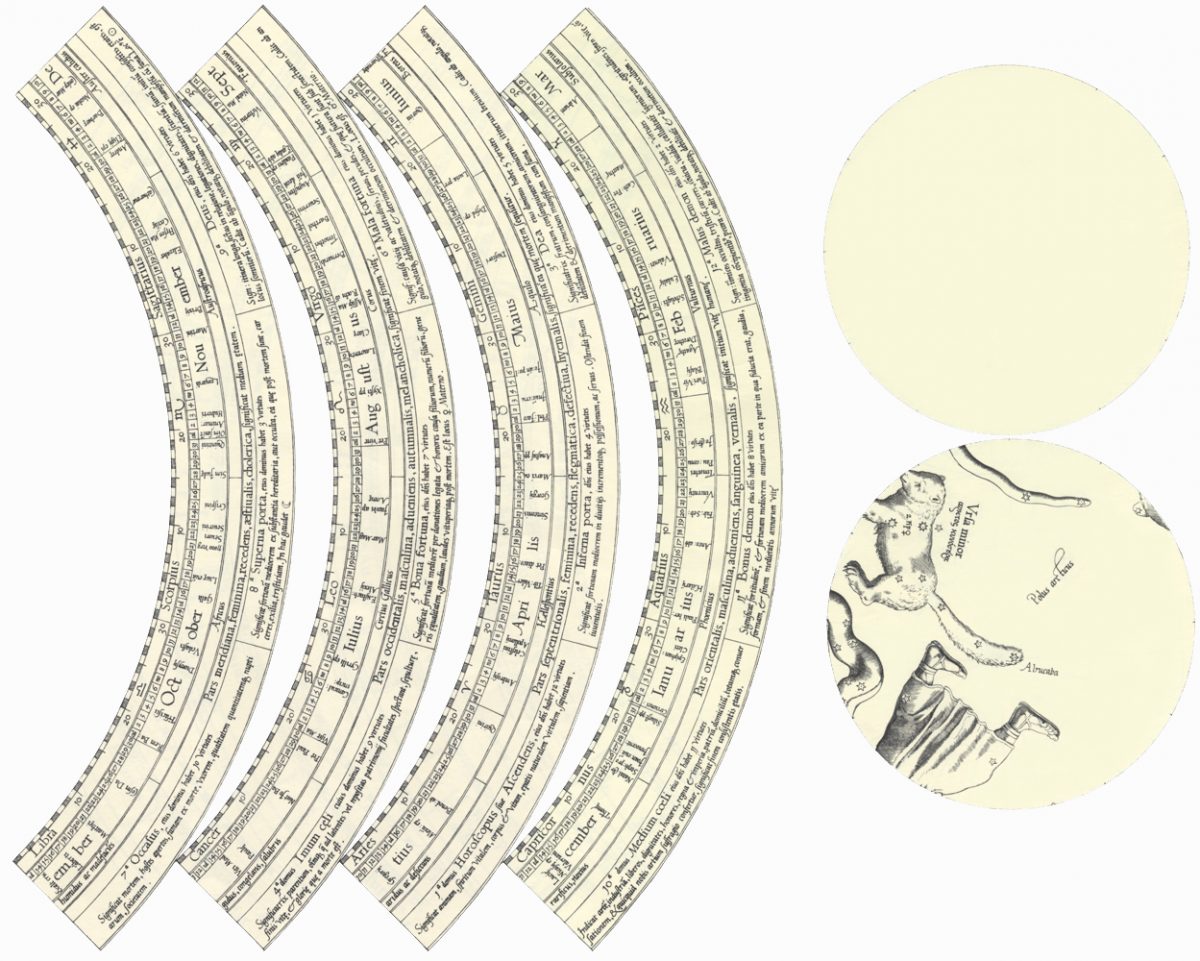Printing plates
In 1541 Gerardus Mercator used copper printing plates for the first time to make his terrestrial globe. Ten years later, in 1551, he would do likewise for the celestial one. He probably got this idea from his predecessor and mentor Gemma Frisius, who had been the first to think of using this technique to print on spheres. It was Gaspard Van de Heyden who engraved the plates for the Mercator globes, assisted by Mercator.
In fact, Mercator himself was an artful engraver and mastered every stage of the globes’ production, from design to delivery. No other globemaker would ever match this expertise.
© Brussels: Royal Library of Belgium, 7 D 148 (RP), reproduced with permission
These copper plates were used to produce globes for decades in Mercator’s workshop, no doubt for over 40 years, without ever being updated or copied. When Mercator died in 1594 the plates devolved to his son Rumold, who continued his father’s business in Duisburg. Rumold in turn died in 1600, leaving several minor children who were advised to sell the engraved plates. It was the children’s guardian who bought them in 1604 and then sold them that same year to Jodocus Hondius, an engraver and publisher of maps in Amsterdam.
When Hondius died in 1612 the plates devolved to his son and to his son-in-law, Joan Blaeu, another printer and cartographer based in Amsterdam. It is assumed that all the plates were lost in the fire that destroyed Blaeu’s printing press on 23 February 1672.
Although the plates are gone, a set of printed gores, purchased by the Royal Library of Belgium in 1868, has survived. The only known original prints in Europe, they were used to make facsimile reproductions of Mercator globes for the 1875 Geographical Congress in Paris. In 1968 an atlas published in Brussels showed the entire set of Mercator’s gores, including the calottes and horizon rings.
Find out more
- 1875 facsimiles : a number of copies of Mercator globes were made in Belgium in 1875. Could the globes found in Lausanne be among these?
- Horst, T. (2011) Le monde en cartes : Gérard Mercator (1512-1594) et le premier atlas du monde, Gütersloh/Munich : Faksimile Verlag et Bruxelles : Fonds Mercator.
- Raemdonck, J. van (1875) « Les sphères terrestre et céleste de Gérard Mercator », in : Annales du Cercle archéologique du Pays de Waas, vol. 5, pp. 254-324.
- Mercator, G., De Smet, A.E.J., Raemdonck, J. van (1968) Les sphères terrestre & céleste de Gérard Mercator, 1541 et 1551 : reproductions anastatiques des fuseaux originaux gravés par Gérard Mercator et conservés à la Bibliothèque royale à Bruxelles / préface Antoine De Smet ; [introduction] J. van Raemdonck extraite des Annales du Cercle archéologique du Pays de Waas, vol. 5, 1872-1875, Bruxelles : Culture et Civilisation, Adam [Jos].
